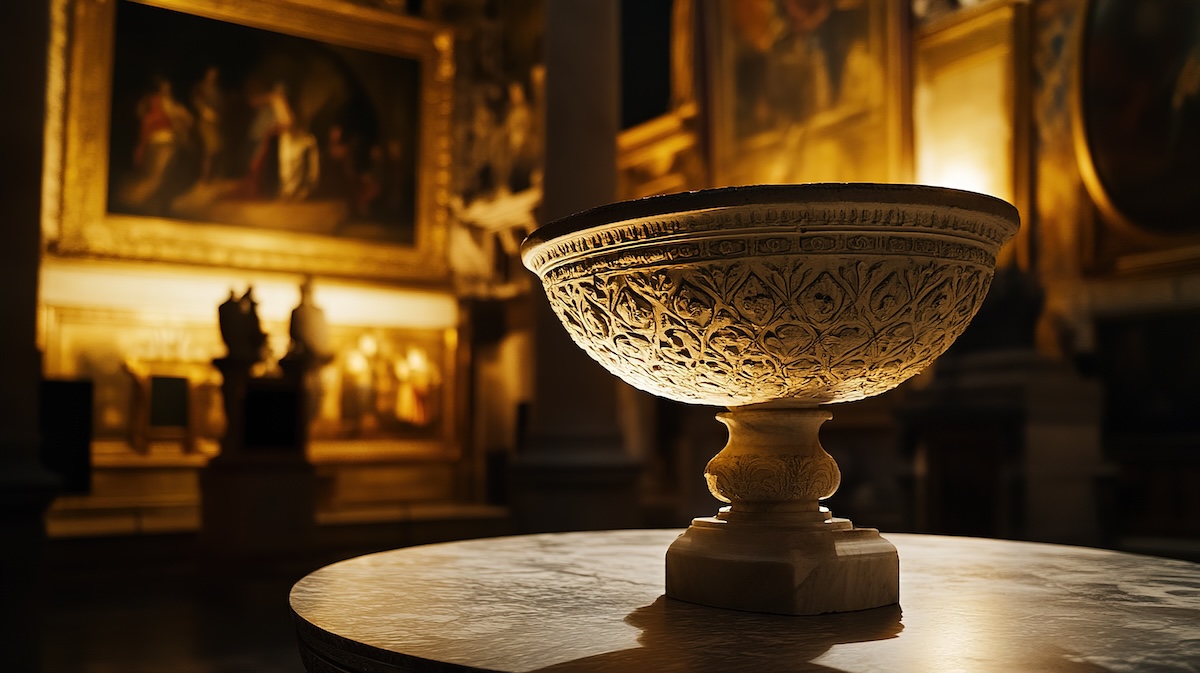Museums and galleries around the world are increasingly using LED technology to preserve paintings, protect their priceless collections, and elevate the viewing experience for visitors. Among the pioneers in this movement is Germany’s historic Aachen Cathedral. In 2015, the cathedral—home to centuries-old artwork and the tomb of Charlemagne—made the strategic switch to LED lighting to reduce ultraviolet (UV) exposure, improve energy efficiency, and enhance visual clarity.
The shift toward LED is more than a lighting upgrade—it’s a revolution in how institutions care for cultural treasures. Here’s why LEDs are now considered essential for long-term art preservation.
Why Traditional Lighting Damages Paintings
For years, halogen and incandescent lights were the standard in museum settings. While these fixtures offer bright, warm illumination, they also emit significant levels of UV and infrared radiation, which are known to accelerate color fading and pigment degradation in artworks. Prolonged exposure to these wavelengths causes sensitive pigments—like the yellows used by Van Gogh—to darken or discolor over time.
This presents a long-standing challenge for curators: How do you balance public access to artwork with the need to protect it from environmental damage?
How LEDs Preserve Art and Reduce Fading
One of the primary reasons museums are using LED technology to preserve paintings is the control that LEDs offer over spectral output. Unlike traditional lighting, LEDs emit virtually no UV radiation, which dramatically reduces the risk of color fading.
Modern museum-grade LED fixtures can also be custom-tuned to emit light at specific color temperatures and wavelengths, eliminating the harsh light and sharp glare that plagued early LED systems. These advancements allow museums to:
-
Highlight color and texture accurately without overexposure
-
Replicate natural daylight conditions with a high color rendering index (CRI) of 90 or above
-
Protect vulnerable pigments from photochemical damage
High-CRI LED lighting, in particular, enhances the viewing experience by revealing the subtle tonal shifts and details that traditional lights may wash out or obscure.
Minimizing Glare and Improving Display Quality
Early generations of LED lights sometimes introduced glare or hotspot issues, especially when pointed directly at glossy artwork or glass-framed pieces. But today’s LED lighting design has addressed this with better light diffusion techniques, cut-off shielding, and precision optics that direct light exactly where it’s needed—without bouncing it into the eyes of visitors.
Curators and lighting designers now have the ability to position LED fixtures strategically, often using angled mounts or recessed housings that softly illuminate canvases and sculptures while keeping light sources hidden or subdued.
Environmental and Economic Benefits for Museums
In addition to preserving artwork, LED technology helps museums meet their sustainability goals. LEDs use up to 80% less energy than halogen or incandescent lighting, significantly lowering electricity usage and operational costs.
Other sustainability benefits include:
-
Longer lifespans: LED fixtures can last 50,000 hours or more, reducing the frequency of bulb replacements
-
No hazardous materials: Unlike fluorescent lights, LEDs contain no mercury or lead, making them easier to dispose of responsibly
-
Lower HVAC costs: LEDs generate minimal radiant heat, which means less strain on a facility’s climate control systems—especially important in tightly controlled environments like galleries and archives
While the LED light source itself stays relatively cool, its internal control components can still produce heat. Museums counter this with advanced heat sink technology that safely dissipates heat away from sensitive artwork. In most systems, any heat-producing elements are housed remotely or behind protective panels, ensuring there’s no risk of thermal damage to displayed pieces.
Museums Leading the Way with LED Lighting
From the Louvre in Paris to the Smithsonian Institution in Washington, D.C., institutions across the globe are embracing LED lighting as part of broader conservation strategies. These systems not only reduce environmental impact but also enhance the integrity of exhibits, giving visitors a clearer, more immersive view of the art while extending the lifespan of every piece.
The example set by the Aachen Cathedral—and many museums like it—demonstrates that using LED technology to preserve paintings is not just a technical decision, but a cultural and ethical one. It allows curators to protect the past while presenting it more vividly than ever before.
For museums and galleries committed to both preservation and presentation, LED lighting is the future. Its ability to minimize UV damage, improve color rendering, and reduce operational costs makes it the ideal solution for institutions looking to safeguard their collections for generations to come.
By using LED technology to preserve paintings, museums are not only enhancing the visual experience for visitors—they’re actively protecting the world’s cultural heritage from the silent threats of light and time.




